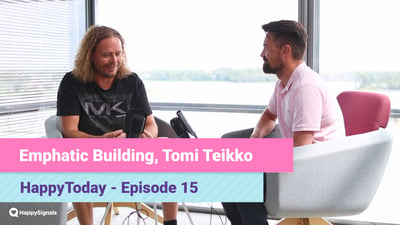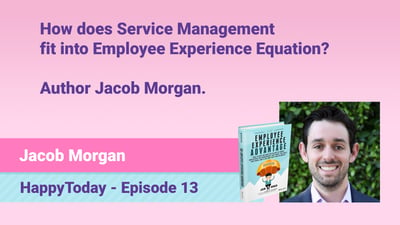Region Midtjylland, Providing Experience for Hospitals
At this year's Happy User Group (HUG) 2019, Pasi had learned how Jesper Hansen's team in Denmark learns and improves their end-users experience with HappySignals experience data. Region Midtjylland provides Service Desk for local hospitals.
Related content

2 minute read
22.07.2019
Empathic Building, The Future of Office Work with Tomi Teikko
Pasi met with Tomi Teikko, Founder and Soul of Tieto Empathic Building. Tomi shares his vision of empathic reality, ...
Read more >
2 minute read
08.07.2019
How does Service Management fit into Employee Experience Equation?
Jacob Morgan, author of The Employee Experience Advantage, joins me for a chat about employee experience equation and ...
Read more >
